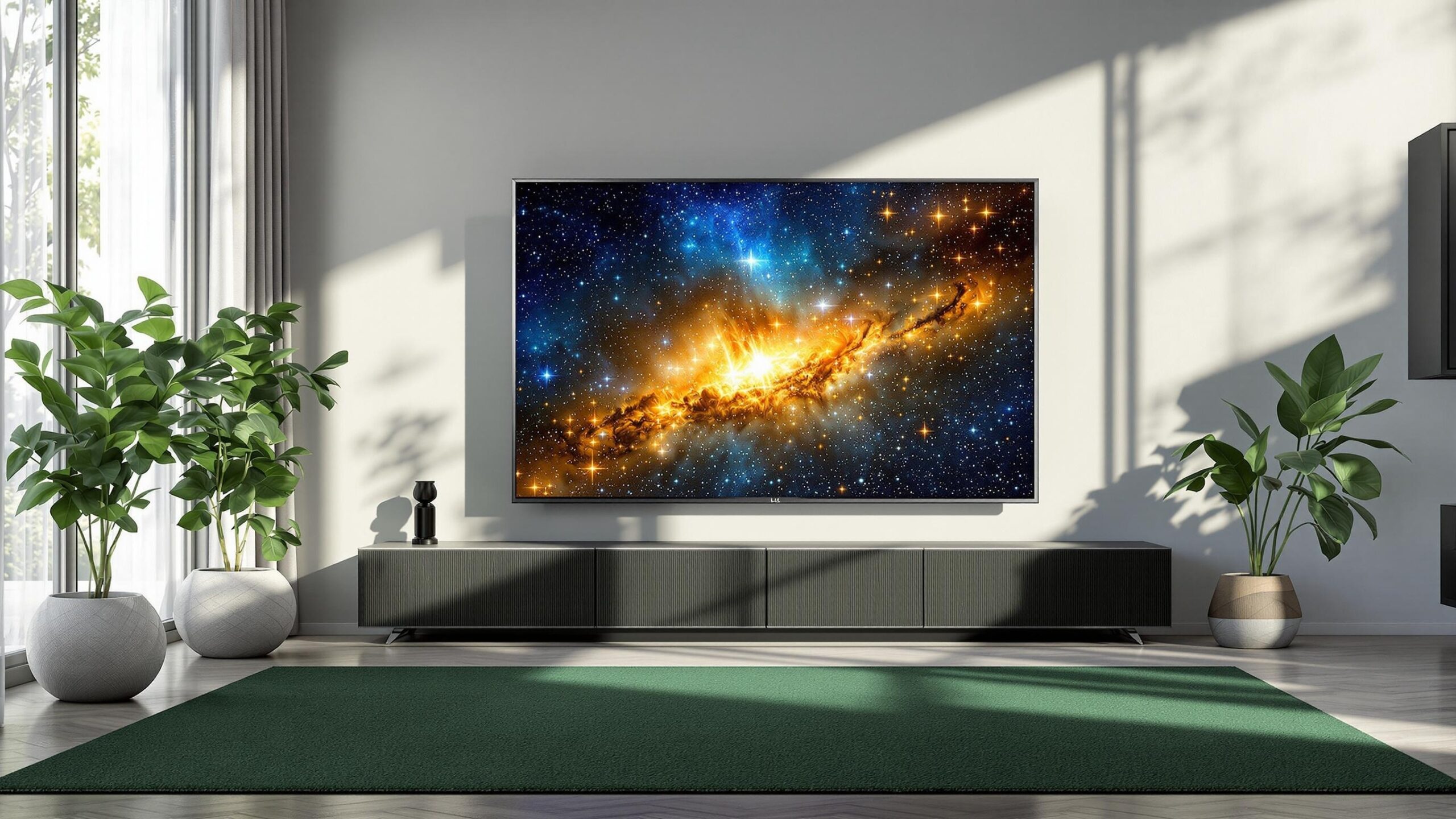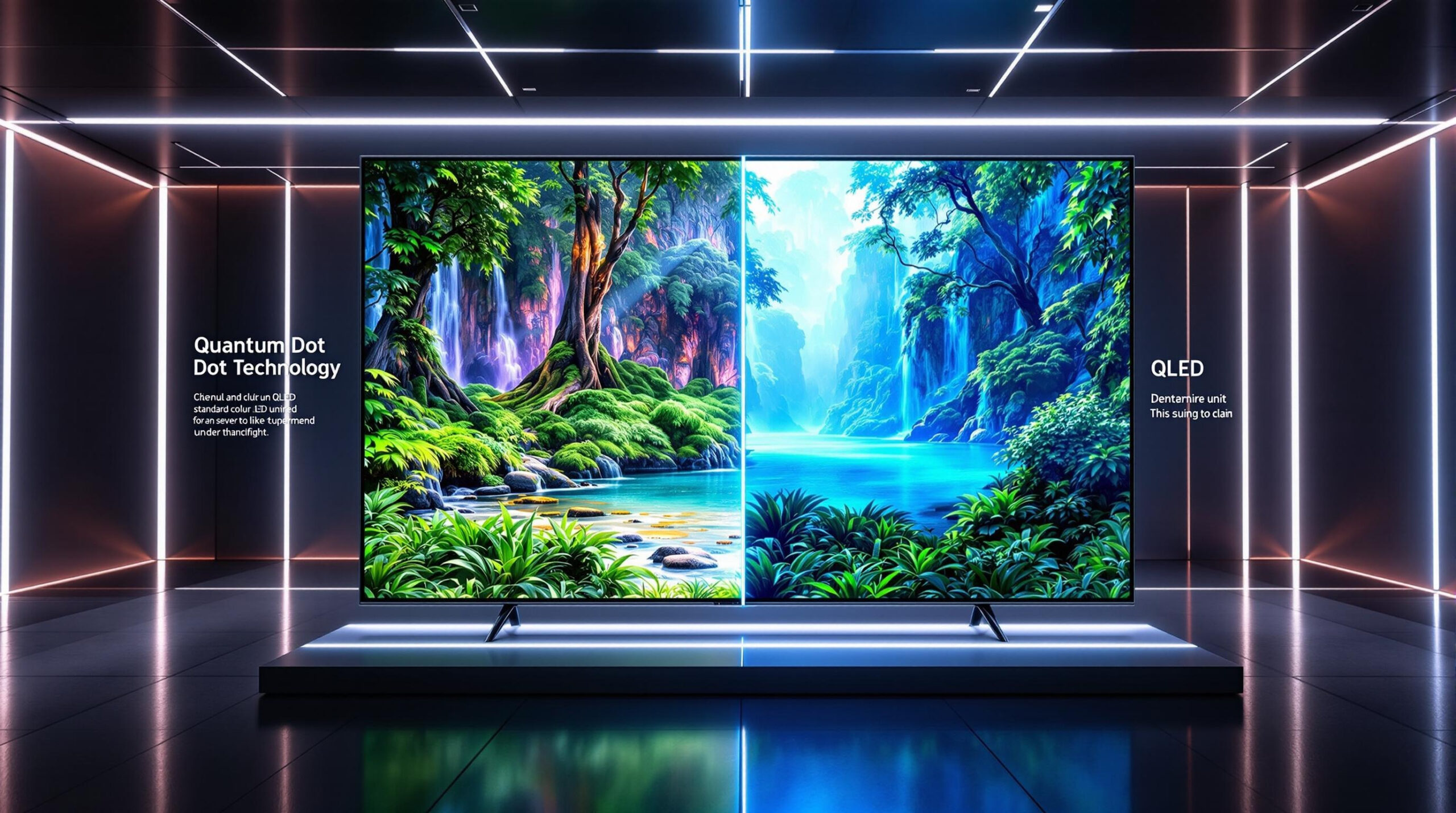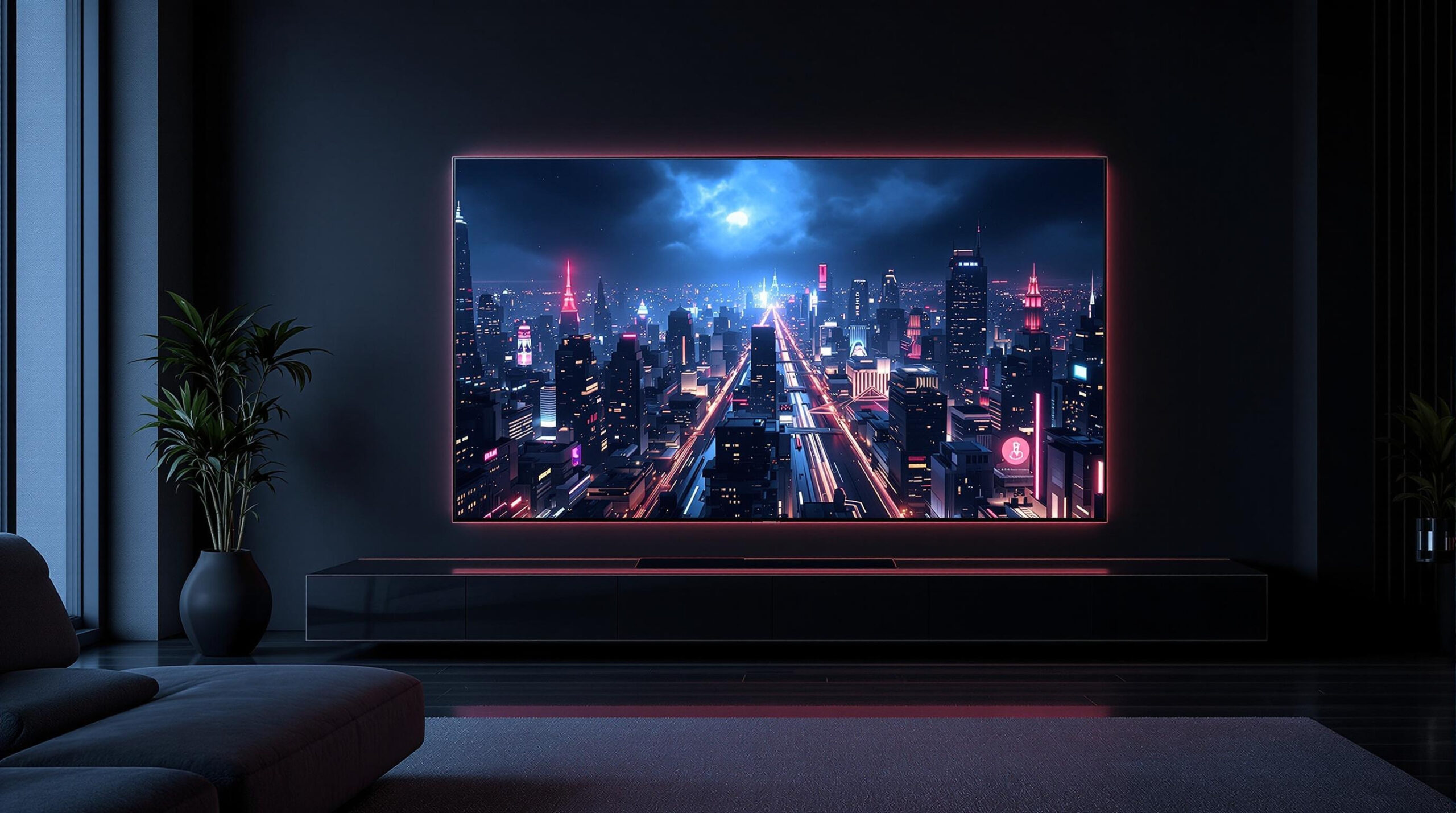In the HDR era, resolution alone no longer dazzles viewers. What makes a modern television feel lifelike is its ability to maintain vivid, accurate color at every brightness level, from a faint candle to a blazing sun-lit beach. Engineers describe that three-dimensional capability as color volume—the union of wide color gamut and high luminance range. QLED TVs, powered by quantum-dot nanotechnology, consistently lead laboratory tests of color volume and accuracy. This article unpacks the physics, chemistry, and electrical engineering that give QLEDs their chromatic edge—then translates the science into plain English so anyone can understand why this “secret weapon” matters on movie night.
Gamut vs. Volume: Adding the Third Dimension
Traditional specs list how much of a two-dimensional triangle—Rec. 709, DCI-P3, or Rec. 2020—a display can hit. That triangle lies on a single brightness plane, typically 100 nits. Real-world images, however, swing from near-black shadows to 1 000-plus-nit highlights. Color volume extends the triangle upward through the full HDR luminance ladder, forming a solid. A TV loses volume if its reds and greens start drifting toward white as it brightens. Quantum-dot LEDs fend off that drift because their nanocrystal emitters keep spectral purity even at 2 000 nits, filling the 3-D solid more completely than white-LED LCDs or, above about 800 nits, even OLED panels.
Quantum Dots: Nanocrystals That Sculpt Light
A quantum dot is a semiconductor crystal only five to eight nanometers wide—50 000 times thinner than a sheet of paper. Shrink the crystal and quantum mechanics widens its bandgap, forcing emitted photons toward shorter wavelengths. By controlling dot size in atomic-layer reactors, chemists tune one batch to fluoresce pure emerald green, another to blaze vivid crimson. The dots live inside a polymer film that sits in front of a blue LED backlight. When blue photons strike a dot, it re-emits a narrowband red or green photon only about 25 nanometers wide—more than three times purer than conventional phosphors. Less spectral leakage means filters don’t bleed, so hues stay saturated at every brightness step.
The Blue LED Engine: High Power Without Color Drift
Quantum dots rely on a sea of high-efficiency gallium-nitride LEDs that pump out intense blue light. Drive current must be high enough to achieve HDR peaks, yet low enough to avoid thermal aging that could shift color. Manufacturers mount the chips on aluminum-nitride ceramic for rapid heat conduction and pair them with graphite vapor-chambers to spread hot spots. Temperature sensors feed a closed-loop controller that trims drive current on the fly, stabilizing the blue wavelength within ±1 nanometer across long movie marathons. Stable blue input equals stable quantum-dot output, which locks color coordinates in place night after night.
Optical Stack: Microlensing Photons to Your Eyes
Raw photons leaving the backlight still need steering. First they diffuse through micro-pattern plates that homogenize brightness. Next, a prism sheet recollimates the beam, sending more light straight toward viewers. The quantum-dot film usually rides between these layers for maximum excitation. Above that sits the LCD matrix—an array of liquid-crystal shutters bonded to thin-film-transistor drivers. Finally, an anti-reflection “moth-eye” coating etched with sub-wavelength cones slashes ambient glare so you see color, not reflections. The whole sandwich is less than six millimeters thick, yet every micron of alignment matters; a tilted diffuser can widen spectral peaks, slicing measurable color volume by several percentage points.
Mini-LED Backlights: Precision Light for Precision Color
QLEDs soared again when engineers replaced coarse edge-lit strips with mini-LED full-array backlights. Thousands of LEDs, each under 200 micrometers, sit in individually addressable zones. Local dimming kills stray light in shadow regions, which lets highlights run hotter without washing out blacks. By lowering average picture level, the TV has power and thermal headroom to aim more photons through the quantum-dot film during specular bursts—expanding usable luminance and, by extension, color-volume depth. With zone counts climbing past 2 000, blooming halos shrink, keeping saturated fireworks pin-sharp against truly dark skies.
Chemistry for the Long Haul: Inorganic Stability
Organic OLED emitters fade as oxygen and moisture break carbon bonds. Quantum dots, built from indium phosphide or zinc selenide cores wrapped in zinc-sulfide shells, have no such weakness. Barrier layers and UV-blocking over-coats let dots retain more than 90 percent of initial luminosity after 50 000 hours. Because wavelength shift is <2 nanometers over that life, Delta E color error stays below the perceptible level of two, preserving factory accuracy long after the warranty. Cadmium-free formulations also meet RoHS and global recycling directives, making modern QLEDs greener than their cadmium-loaded 2016 ancestors.
Factory Calibration: Mapping Millions of Color Points
Hardware alone does not guarantee fidelity. Each finished panel goes under a spectroradiometer, where robots sample thousands of hue-brightness combos. A three-dimensional look-up table then stores voltage offsets for every RGB target in the Rec. 2020 spec. Higher-end QLEDs add self-cal routines that flash test patterns after 100 hours, measure with an internal color sensor, and fine-tune the LUT if any point drifts above 0.5 Delta E. Enthusiasts can plug in external probes via CalMAN software to push error below one—reference-grade territory once exclusive to $30 000 mastering monitors.
Measuring Color Volume: From Lab Charts to Living Rooms
Review sites quote figures like “95 percent P3” or “85 percent Rec. 2020 volume.” Those numbers come from the BT. 2124 methodology, which samples color at 5 000 coordinate points across luminance steps from 0.01 nit shadow detail to 10 000 nit highlights. Software compares the set’s measured hull against an ideal Rec. 2020 solid, then outputs a percentage. Modern flagship QLEDs routinely score above 80 percent, outperforming most WOLEDs above 1 000 nits where organic blue emitters roll off to protect lifespan.
Human Vision: Matching Cone Response with Quantum Precision
Your eye has three cone classes peaking at roughly 420 nm, 534 nm, and 564 nm. Quantum-dot red and green peaks align almost exactly with the M and L cones, while the blue backlight nails the S-cone sweet spot. Because emission bands are narrow, the cones receive minimal stray wavelengths, lowering metameric mismatch—the phenomenon where colors look different under sunlight versus screen light. That alignment is why a crimson Ferrari on a QLED looks the same shade whether you view it at sunset or under fluorescent kitchen lamps.
Competing Tech: QLED vs. OLED and Micro-LED
OLED wins absolute black because each pixel self-extinguishes, but it surrenders color volume as luminance climbs beyond 800–1 000 nits. Micro-LED promises both pixel-level dimming and high peaks, yet mass manufacturing remains cost-prohibitive for living-room-sized screens. Until fabs can stamp micro-LED dies cheaply and accurately transfer millions of them per panel, QLED’s combination of affordability, long life, and extraordinary color volume keeps it the reigning champion for HDR animation, sports, and daytime viewing.
Environmental and Energy Factors
Narrow quantum-dot spectra waste less energy in color filters, delivering around 15 percent power savings over white-LED LCDs at the same brightness. Low-blue-light modes shift the backlight peak without broadening spectral tails, preserving gamut while easing eye strain—a balance many OLED low-blue filters cannot match without chopping color points off the triangle.
Future Directions: Perovskite Dots and Electroluminescent QLED
Researchers are trialing perovskite quantum dots with even tighter 15-nanometer emission bandwidths, edging toward 100 percent Rec. 2020 at consumer brightness levels. Meanwhile, “true” electroluminescent QLED—where each dot serves as an emissive pixel rather than a conversion layer—could marry pixel-level dimming with inorganic longevity. Challenges remain: charge-injection uniformity, lifetime in air, and the need to print dot layers without clogging nozzles. Yet prototypes already surpass 3 000 nits while holding color coordinates to within one Delta E across the panel.
Conclusion: A Secret Weapon in Plain Sight
Color volume and accuracy sit at the crossroads of quantum mechanics, heat management, optical design, and clever calibration. QLED TVs exploit that intersection better than any mass-market rival, guiding blue photons through nanocrystal fences to paint fireworks, coral reefs, and sunlit deserts exactly as filmmakers captured them. When friends comment that your screen “just looks more real,” they are seeing the combined fruits of hundreds of patents and decades of material science distilled into one elegant display. In a marketplace obsessed with ever-higher pixels, QLED quietly wins loyalty by mastering a far tougher metric: delivering every color, at every brightness, with razor-sharp accuracy for years to come.
QLED TV Reviews
Explore Philo Street’s Top 10 Best QLED TV Reviews! Dive into our comprehensive analysis of the leading QLED TV products, complete with a side-by-side comparison chart to help you choose the perfect protection for your devices.




